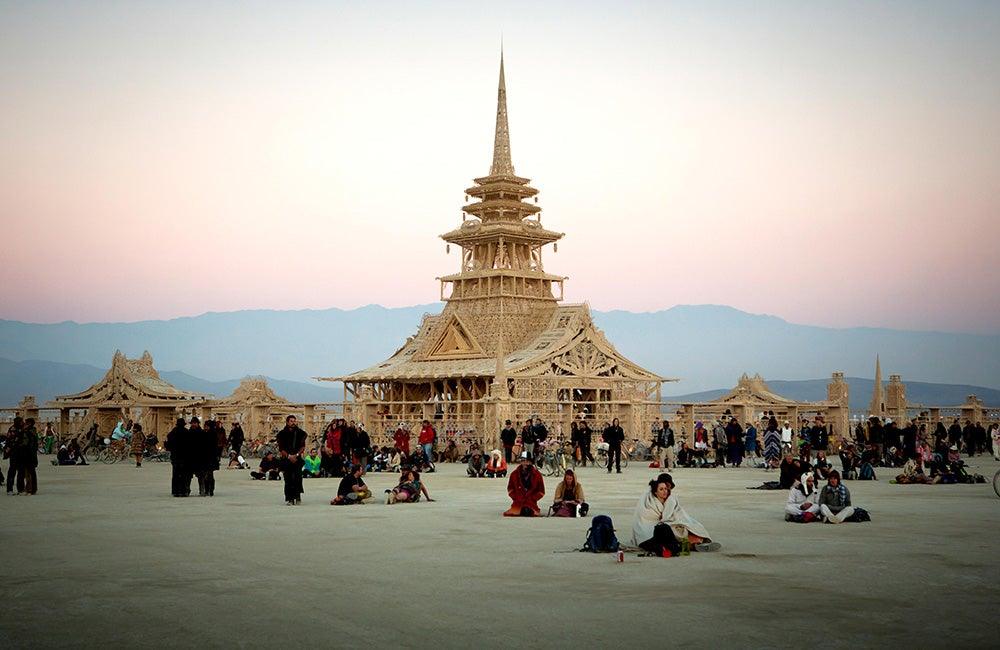First published: Fall 2015
Even as a child, David Best wanted to be an artist like his father before him. He first became involved with alternative expression when he produced his first art car in 1959 – a pick-up truck, which was soon followed by a highly decorated 1960s Ford Falcon and an early version of the famous Fruitmobile. He was an early participant in the Houston Art Car Parade and has produced 34 art cars so far, as well as designing Houston’s dedicated Art Car Museum.
Best, however, is best known for his series of specially built Temples at Burning Man, the annual, week-long, desert extravaganza held in Nevada. The origins of this particular creative impulse go back to 2000, when Best built a shrine-tribute at Burning Man to a dear friend he had recently lost in a motorcycle accident.
The first creation happened naturally and organically, with Best and his friends assembling as a shrine to their lost comrade. The organisers of Burning Man asked him to return the following year, and Best’s huge Temple of Tears was built, dedicated to people who had died from suicide.

Temple of Juno committed to the fire, Burning Man 2012
His Temple of Joy the following year involved seven 40-foot trailers filled with timber and materials – everything needed for the construction has to be transported to Black Rock Desert and no waste or trace can remain. While Best has some plan of what he may construct, the creations tend to be 90 per cent intuitive and 10 per cent planned in advance.
Over 100 people worked with Best on the construction of the temple, over three to four weeks. Like all of his previous creations at Burning Man, the Temple went up in flames in a closing ceremony, having been explored by the temporary citizens of Black Rock City over the days leading up to the fiery ceremony, and filled with messages to and mementos of lost loved ones in whose memory the temple burns.
This is an article extract; read the full article in Raw Vision #87




